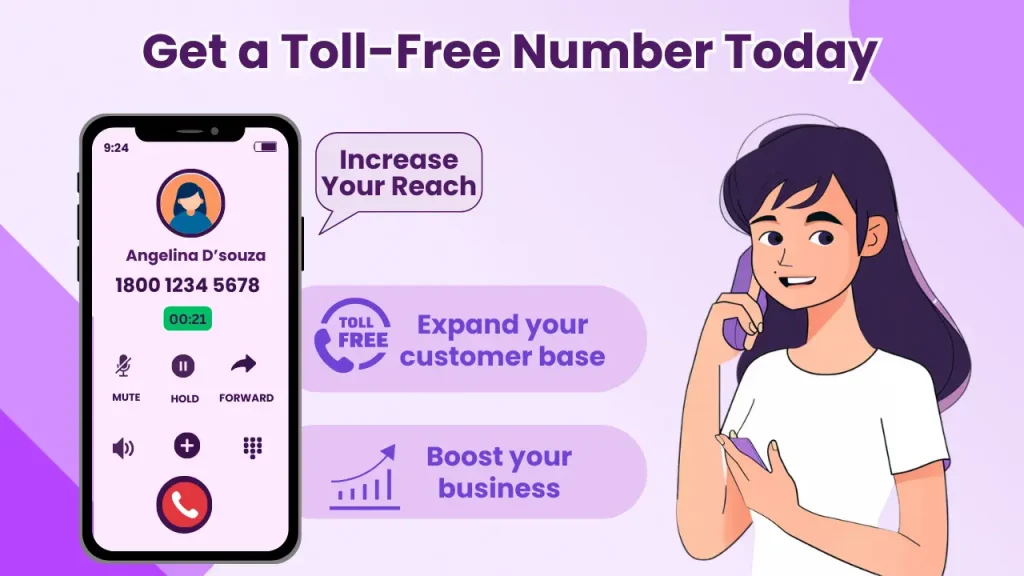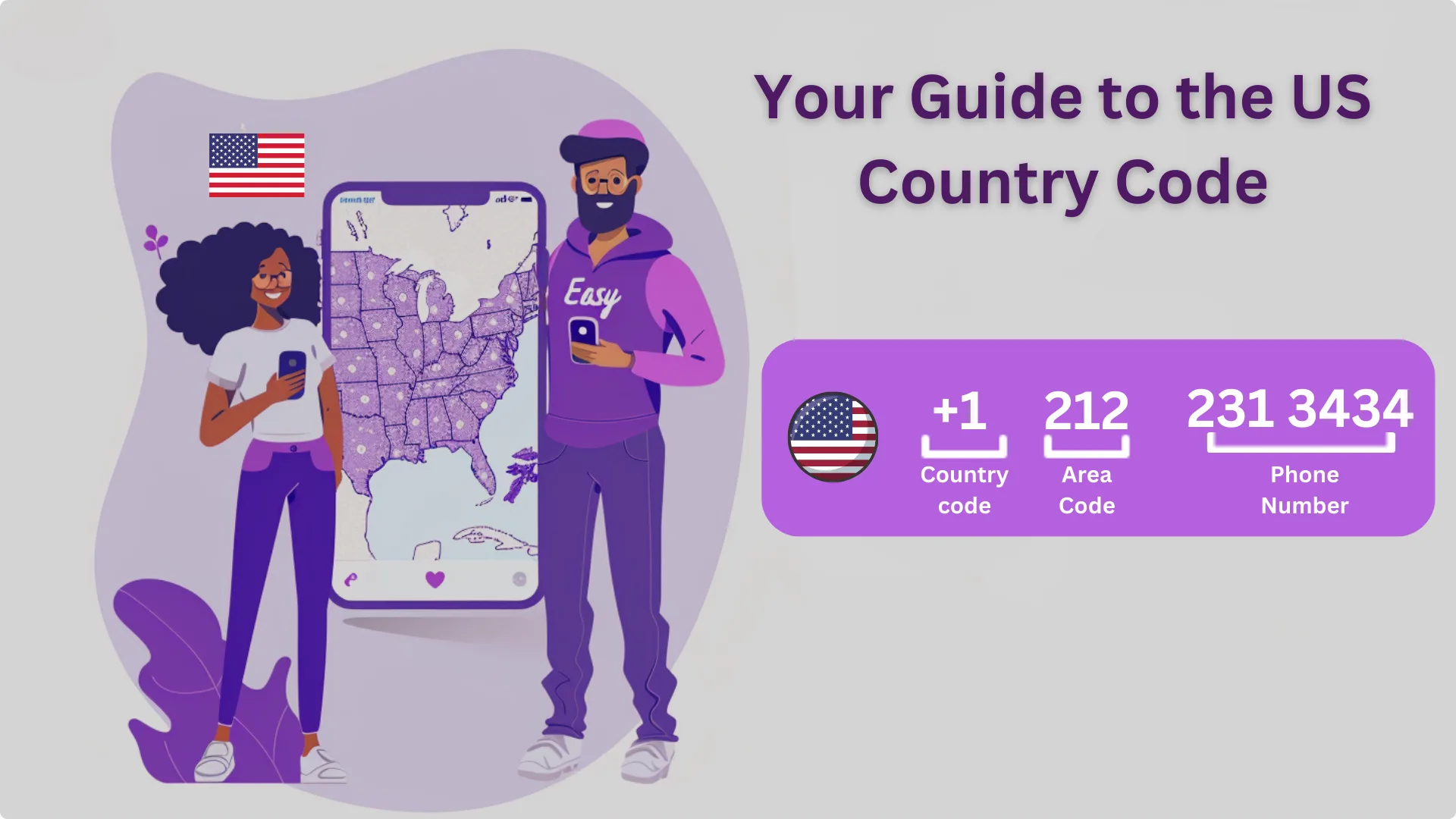Toll-free numbers are an essential tool for businesses looking to enhance communication with their customers.
Unlike regular phone lines, a toll-free phone number allows callers to reach businesses without incurring any charges, making it a win-win for both parties.
This piece explores how these numbers work, their benefits, and practical applications for businesses.
From improving customer service to boosting brand image, discover why incorporating a toll-free number could be a game-changer for your business.
Key Takeaways:
- Toll-free numbers are free for callers, enhancing customer experience and boosting accessibility.
- Businesses can utilize toll-free numbers for customer service, sales and marketing, technical support, and order processing.
- There are different types of toll-free numbers including 800, 888, 877, and 866 numbers.
What is a Toll-Free Number?
Certain business telephone lines allow customers to make contact without paying for the call. Instead, the company covers all incoming communication expenses.
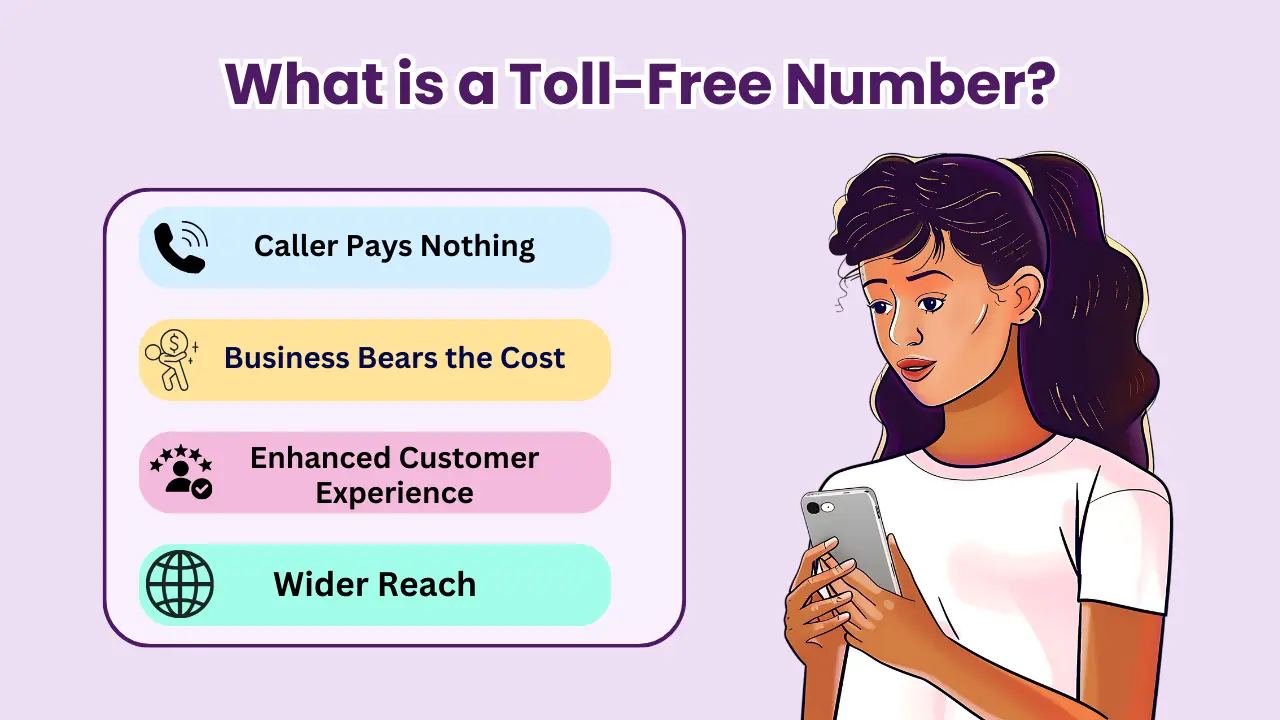
This arrangement improves customer engagement and service quality, making it particularly appealing for entrepreneurs in the United States and Canada. Such calling systems can play a crucial role in a firm’s outreach strategy, especially for those employing internet-based phone services and memorable alphanumeric digits for brand recognition. Furthermore, international versions of these free-to-caller lines are available for companies seeking to establish connections with clients beyond national borders.
International toll free numbers enable businesses with an international presence to allow customers from different countries to call without incurring international charges, ensuring there is always a way for them to get in touch free of charge.
How Do Toll-Free Numbers Work?
Certain business phone systems allow customers to reach companies without incurring any charges, as the organization covers these expenses through toll free call services.
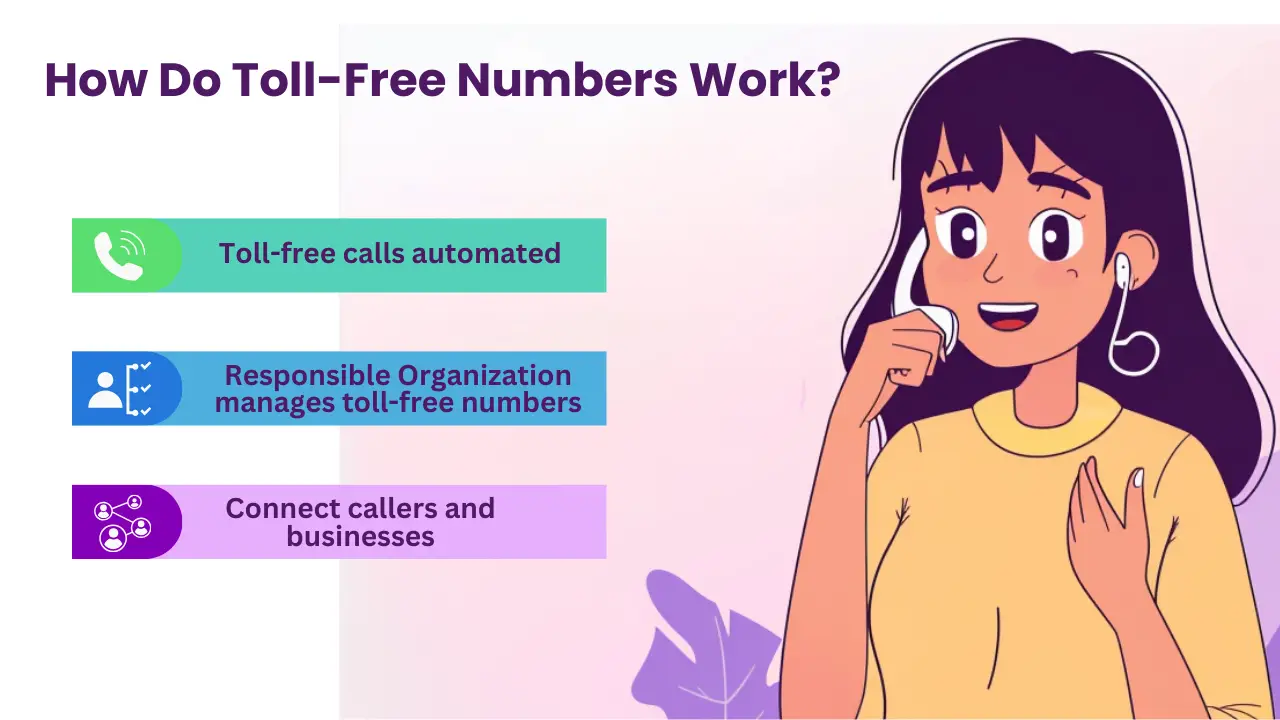
This arrangement is made possible by various service providers who manage call routing to ensure smooth communication and efficient service delivery. When a person dials one of these special business lines, the call is automatically directed through advanced telecommunication networks. The process behind this seamless interaction involves several steps:
- The initial carrier recognizes the unique prefix and routes it to a central switch that identifies the call type. The history and evolution of toll free calls include the transition from manual operator-assisted systems to modern direct-dial automated systems.
- This switch then forwards the call to the designated service manager, which has specific agreements with the businesses receiving these communications. Understanding how toll free number work involves knowing the role of the Responsible Organization in assigning numbers and the FCC regulations related to portability.
- The call ultimately reaches the local number provided by the company, ensuring clear and efficient dialogue. The toll free prefix, such as 800, 888, 877, 866, 855, 844, or 833, plays a crucial role in identifying these numbers. By orchestrating these various stages, different service providers effectively minimize costs for consumers while enabling businesses to expand their reach without worrying about individual call expenses.
Benefits of Having a Toll-Free Number
Providing a dedicated business line that’s free for callers offers numerous benefits, enhancing customer experience by offering a straightforward way to connect without worrying about call costs.
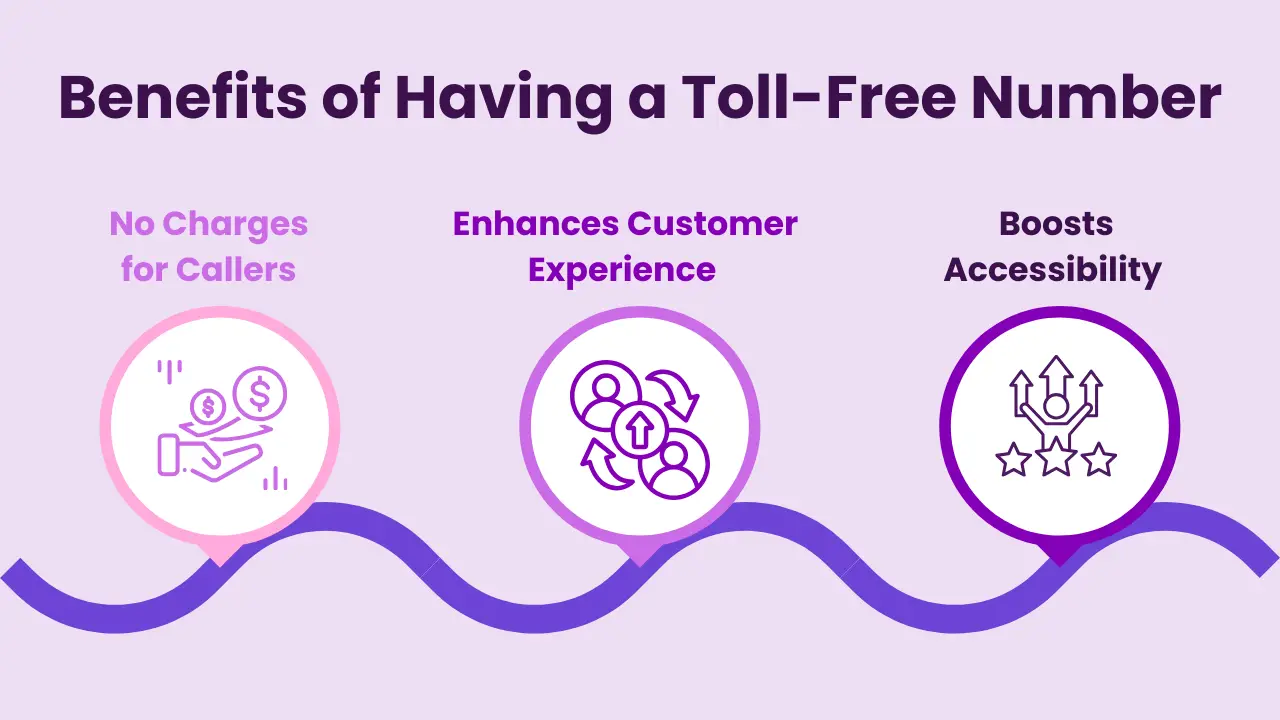
This increased accessibility can significantly improve customer loyalty and satisfaction, while also bolstering a brand’s reputation and image. By leveraging these special lines, companies can ensure effective communication, making their services more appealing to potential clients across various regions, including the US and Canada.
No Charges for Callers
One of the primary advantages of these special business lines is that they are free for callers, meaning customers can reach a company without incurring any charges. This feature not only encourages more inquiries but also makes it easier for potential clients to connect with the services they need, essentially removing financial barriers that could deter them from reaching out.
The implications of these no-cost calls extend far beyond just savings. Businesses can experience a substantial increase in engagement as a result of this accessibility. When clients know they can call without worrying about additional fees, they are more likely to reach out for:
Product inquiries and support
Feedback and suggestions
Consultations and services
This increase in communication can lead to enhanced customer satisfaction, resulting in loyalty and repeat business. Companies can collect valuable insights regarding customer preferences and behaviors, ultimately guiding their marketing and operational strategies.
Enhances Customer Experience
These special lines significantly enhance the customer experience by providing a seamless communication channel between customers and businesses. This improves not only the accessibility of customer support but also fosters a more positive interaction overall.
By leveraging no-cost calling options, businesses can ensure that customers feel valued and heard. This is particularly evident in the following ways:
- Accessibility: Customers can reach out without the fear of incurring charges, encouraging them to seek help whenever needed.
- Professionalism: A dedicated line lends credibility to a business, signaling a commitment to customer service.
- Centralized Communication: Such numbers simplify the process of managing customer inquiries, making it easier for support teams to handle calls efficiently.
Incorporating these lines into communication systems reduces wait times and improves response rates, ultimately leading to greater customer satisfaction. This approach not only enhances support effectiveness but also nurtures a lasting relationship between customers and the brand.
Boosts Accessibility
These special business lines, known as toll-free telephone numbers, greatly boost accessibility, allowing customers from various regions, including local and international areas, to connect easily without worrying about long-distance charges. This is particularly beneficial for businesses with a diverse clientele.
Utilizing no-cost calling
Improves Brand Image
Offering a dedicated line that’s free for callers can significantly improve a business’s brand image by projecting a professional image and demonstrating commitment to customer service. This credibility can lead to increased customer trust and loyalty over time.
When customers see a no-cost calling option, they often perceive the business as more accessible and customer-friendly, which can enhance their overall experience. This reassurance fosters a positive impression and encourages potential customers to engage with the brand.
Here are several ways a no-cost business line can elevate credibility:
- Accessibility: It allows customers to reach out without worrying about costs, thus enhancing their willingness to communicate.
- Professionalism: A dedicated, free-to-call line adds a layer of sophistication and seriousness to the brand.
- Trust: Companies that invest in such services often come across as wanting to prioritize customer relations, positively influencing perception.
This cultivation of trust invariably translates into stronger customer loyalty, fostering long-term relationships that contribute to the brand’s success.
How Can Businesses Use Toll-Free Numbers?
Companies can harness the power of dedicated, free-to-call lines in various ways to enhance their operations and improve customer interactions.
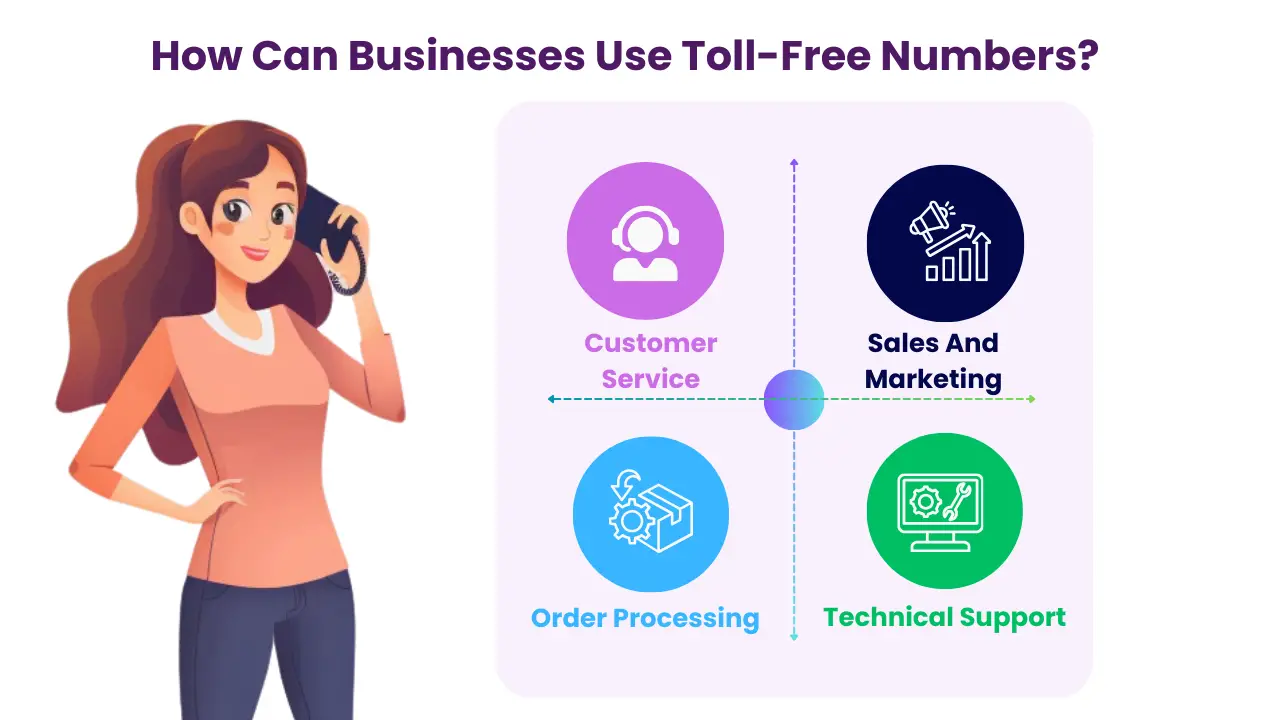
From providing exceptional customer service to driving sales and facilitating technical support, these special business lines are versatile tools that can significantly contribute to overall success. Furthermore, they can be used effectively for order processing, ensuring that customers have a hassle-free experience when purchasing products or services.
By implementing these no-charge communication channels, businesses can create a more accessible and customer-friendly environment, fostering loyalty and potentially increasing their market reach.
Customer Service
Implementing dedicated no-cost business lines for customer support allows companies to offer specialized assistance channels that are both economical and readily accessible for clients. This enhances customer satisfaction and fosters long-term relationships. The use of these free-to-call options significantly transforms the way customer interactions are managed, providing a seamless communication experience. For instance, companies can direct inquiries through a single, memorable contact point, streamlining the process for the customer.
- By utilizing these lines, businesses can eliminate any concerns over call charges, encouraging customers to reach out without hesitation.
- This accessibility can lead to an increase in inquiries, resulting in more opportunities to resolve issues and convert prospects into loyal clients. Tracking call metrics through these special lines allows businesses to identify trends in customer needs, enabling them to tailor their services more effectively. Such improvements not only enhance communication but also significantly boost customer loyalty, as clients recognize the company’s commitment to support.
Sales and Marketing
These numbers are a powerful asset in sales and marketing strategies, allowing businesses to generate leads and capture customer interest without the barrier of call costs. This can lead to increased inquiries and conversions.
These numbers not only eliminate the financial obstacles that potential customers face when reaching out but also enhance a company’s professional image. By displaying a these number prominently in advertising campaigns, businesses can make it easier for prospects to connect, leading to:
- higher engagement rates
- improved customer satisfaction
- and a significant uptick in sales conversions.
Utilizing advanced call tracking features allows organizations to monitor the effectiveness of various marketing channels. This data enables strategic adjustments that can further optimize lead generation efforts, ensuring they meet their targets more efficiently.
Technical Support
Offering these numbers for technical support allows businesses to assist customers without them worrying about call costs, enhancing the quality of communication and support provided.
By removing the financial burden of phone charges, toll-free numbers encourage more customers to reach out for assistance, fostering a sense of confidence in accessing help when needed. This translates into improved customer satisfaction, as users feel valued and supported without hesitation. Such numbers can effectively streamline the handling of queries and concerns, allowing support teams to:
- Address issues promptly and efficiently
- Enhance customer loyalty through responsive service
- Facilitate real-time conversations benefiting both parties
Ultimately, leveraging these numbers in a technical support context connects companies to their clientele, promoting a collaborative atmosphere to solve problems while building stronger relationships.
Order Processing
Dedicated no-cost calling lines play a crucial role in order processing, allowing customers to place orders easily while ensuring that businesses can manage incoming requests efficiently. When companies adopt these free-to-call options, they facilitate a seamless ordering experience for customers, significantly enhancing their interaction with the brand. These lines not only eliminate long-distance charges but also provide a straightforward channel for inquiries and support, making it easier for potential buyers to connect.
- With a dedicated cost-free line, organizations can prioritize and track customer communications more efficiently.
- This streamlined approach is particularly beneficial during peak shopping seasons, where quick response times can translate into increased sales.
- Having a no-charge contact option reassures customers, fostering trust and encouraging them to make larger purchases. Ultimately, the inclusion of these special business lines in order processing systems acts as a catalyst for enhancing customer service and driving sales growth by making the experience more user-friendly.
Different Types of Toll-Free Numbers?
There are several types, including the well-known 800 numbers, 888 numbers, 877 numbers, and 866 numbers, each serving unique purposes in business communications.
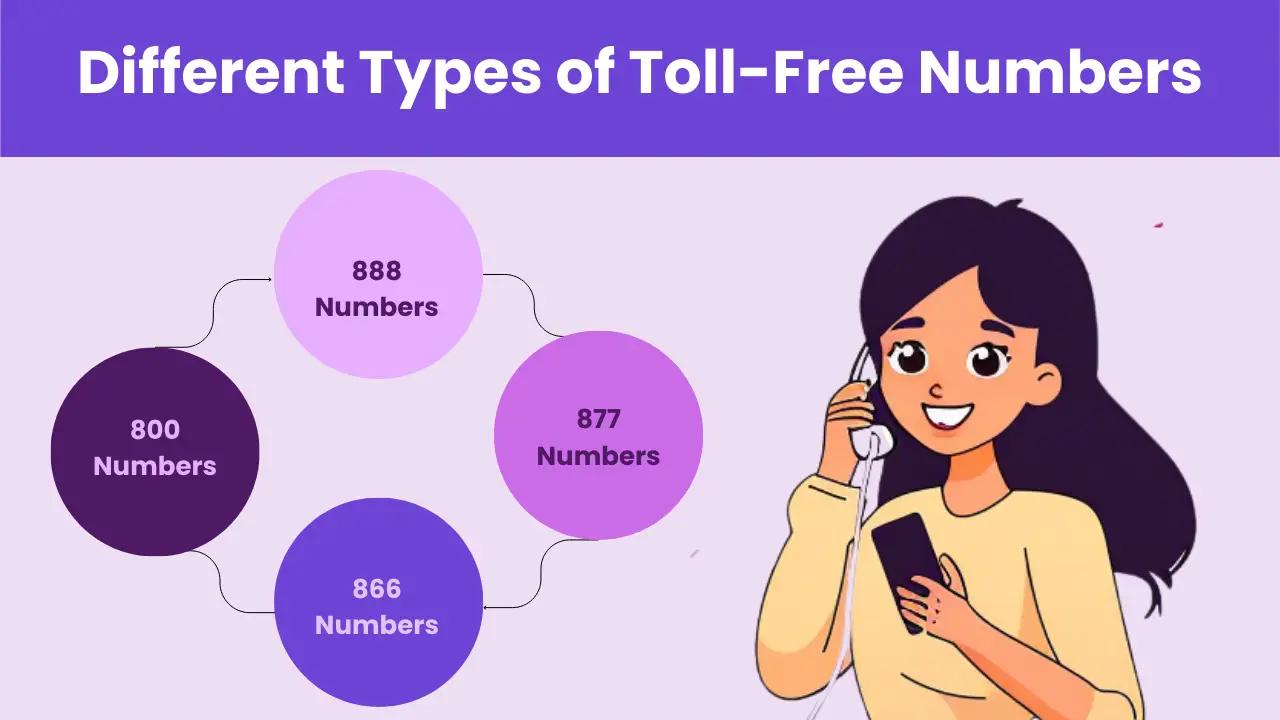
Toll free numbers start with a toll-free prefix such as 800, 888, 877, 866, 855, 844, or 833, and are portable between Responsible Organizations. Vanity numbers, which incorporate memorable words or phrases, are also popular options that further enhance brand recognition. Vanity toll free numbers spell out the name of the company or a relevant keyword, providing additional benefits for brand recognition.
800 Numbers
800 numbers are the original toll-free numbers, providing businesses with a classic option for facilitating customer communication without incurring charges for the caller.
These numbers have a storied history that dates back to the 1960s when they were introduced to help enhance customer service and improve access for consumers. By offering a way for potential clients to connect with businesses without worrying about the cost, 800 numbers have played a crucial role in expanding market reach and fostering trust. Businesses of all sizes have benefited from this option, allowing them to:
- Enhance customer engagement
- Increase brand recognition
- Track calls effectively for better service
Today, while other numbers like 888, 877, and 866 have emerged, the significance of the traditional 800 number remains unparalleled, serving as a timeless tool in the ever-evolving landscape of customer communication.
888 Numbers
888 numbers serve as a popular alternative to the original 800 numbers, offering businesses another toll-free option to enhance customer communication.
These options not only broaden the reach of companies but also significantly improve customer experience by eliminating the costs associated with long-distance calls. When customers see an 888 number, they often associate it with a reputable and professional business, thereby increasing trust and likelihood of engagement.
The benefits of utilizing 888 numbers extend to:
- Improved accessibility for customers across different regions without burdensome charges.
- Flexibility in the establishment of a distinct brand identity, as companies can choose memorable numbers that resonate with their target audience.
- Enhanced customer support with dedicated lines, allowing for better service and quicker resolutions of inquiries.
In an increasingly competitive market, leveraging these options is an essential strategy for businesses aiming to maintain a strong connection with their clients.
877 Numbers
877 numbers are another type of toll-free number that businesses can utilize to provide excellent service and support to customers.
These numbers serve as a direct line of communication, ensuring that the company’s services remain accessible during business hours and beyond. One of the standout features is that they are free for callers, meaning that customers can reach out without worrying about incurring charges, which encourages more frequent interactions.
- Enhanced Customer Satisfaction: With the assurance of no costs, clients are more likely to seek assistance.
- Nationwide Reach: Businesses can expand their market without geographical limitations.
- Brand Recognition: The presence of a toll free number often enhances a company’s credibility.
Utilizing an 877 number not only facilitates customer engagement but also cultivates a positive image in the marketplace, making it an effective tool for any organization looking to thrive.
866 Numbers
866 numbers are a newer addition to the toll free family, providing businesses with an additional avenue to facilitate client communication without incurring costs for callers.
These numbers not only help companies enhance their professionalism but also establish a more approachable image. By using toll free services, businesses can create a sense of trust and reliability, which is crucial for attracting and retaining customers.
The benefits are manifold:
- Cost Savings: Clients can reach out to businesses without worrying about long-distance charges.
- Brand Recognition: A toll free number can improve marketing efforts, making it easier for potential customers to remember.
- Increased Accessibility: Companies are reachable from different regions, broadening their customer base.
866 numbers contribute to a seamless communication experience, motivating clients to reach out more frequently and engage with the brand.
How to Get a Toll-Free Number?
Acquiring a toll free number is a straightforward process that involves selecting a provider and setting up the number, often through VoIP technology. Understanding the costs associated with different plans is crucial for making an informed decision.
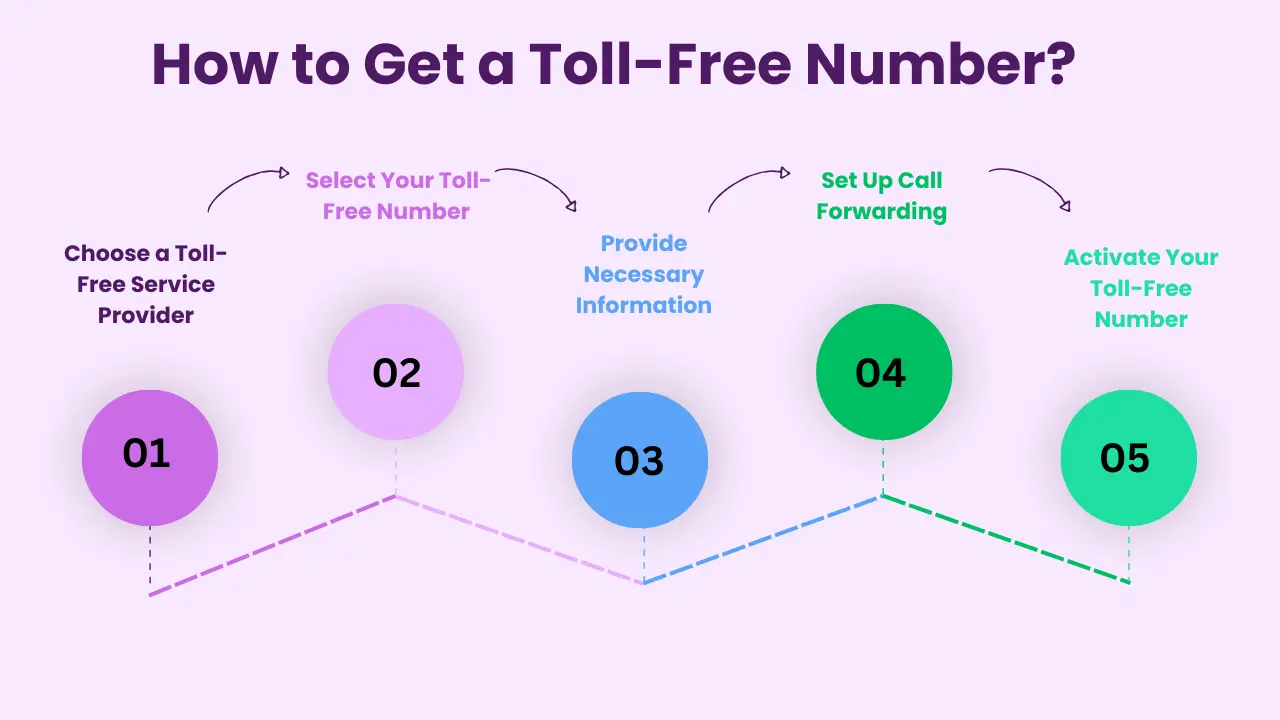
To begin, one first needs to identify the right service provider, as numerous companies offer various features and pricing structures. It’s advisable to research options and compare their offerings.
- Start by evaluating multiple providers based on their reputation and customer service.
- Next, consider the specific features you might need, such as call forwarding, voicemail, or integrated analytics.
- Once a provider is chosen, review the pricing models they present, which may include monthly fees, per-minute costs, or setup charges.
Checking for any hidden fees is essential to avoid unexpected expenses later on. Remember to assess if the toll free number is customizable, as some providers offer an array of number options, enhancing business identity and accessibility.
What Are the Costs Associated with a Toll-Free Number?
The costs associated with a toll free number can vary, typically encompassing a monthly service fee, per-minute charges for incoming calls, and additional features that businesses may choose to implement.
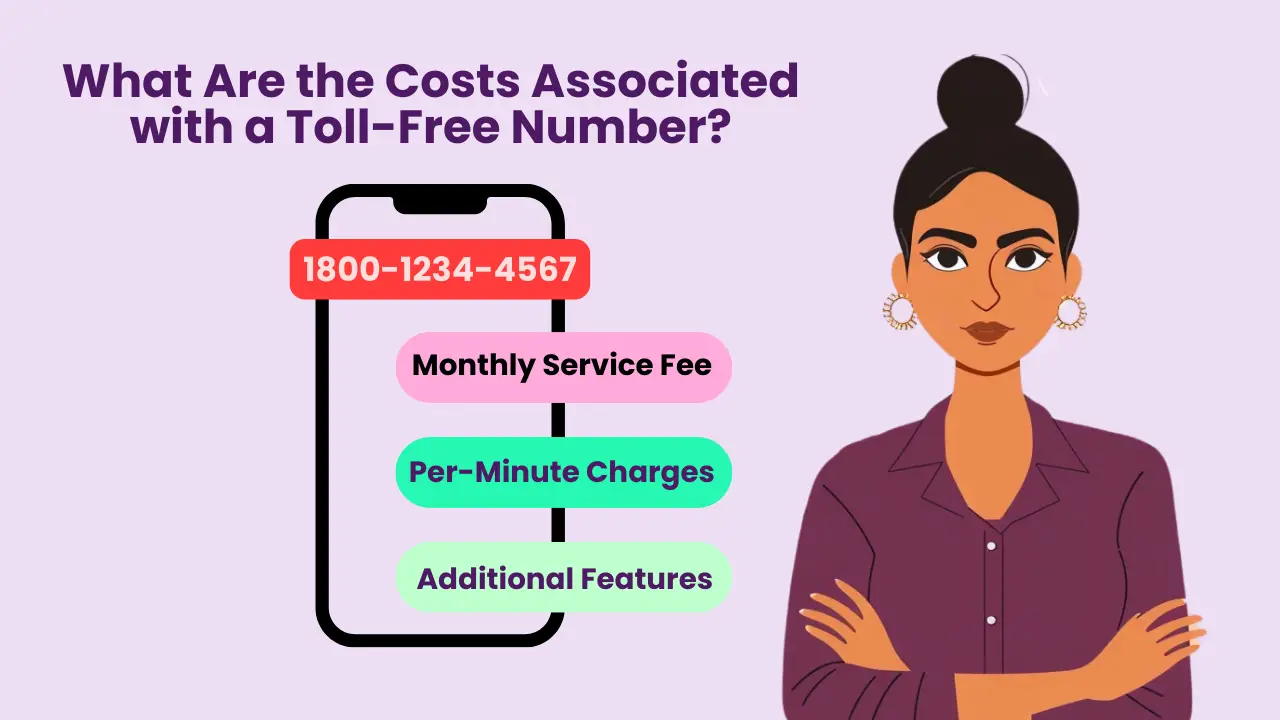
Understanding these costs helps businesses budget effectively and select the right plan for their needs.
Monthly Service Fee
The monthly service fee for a toll free number can vary depending on the provider, with different plans offering varying levels of service and features.
When selecting a plan that best suits business needs, it is vital to consider what the fee actually includes. Many providers offer comprehensive packages that encompass various aspects of communication. Here’s a breakdown of typical features:
- Call forwarding: Redirect calls to any designated number.
- Virtual receptionist: Enhance customer interaction without the need for additional staff.
- Analytics: Access detailed reports on call volume and duration to help analyze customer engagement.
For instance, while some providers might offer basic call handling, others might include advanced options like automated voicemail or messaging services. Comparing these features can enable businesses to choose a plan that maximizes value for their investment in customer service.
Per-Minute Charges
Many services include per-minute charges for incoming calls, which can impact overall costs significantly, especially for businesses with high call volumes.
This pricing model is particularly important for companies that rely on customer service and sales calls as a significant part of their operations. Understanding the nuances of per-minute charges is crucial for effectively managing expenses and budgeting. For instance, a business receiving thousands of calls may see a rapid escalation in costs.
- The charge per minute typically varies based on the service provider and can significantly influence the total bill.
- Some providers offer flat-rate plans, while others may have tiered pricing structures.
- Evaluating these options can help businesses make informed decisions to optimize their communication strategy.
Consequently, businesses must carefully analyze their call patterns to predict and mitigate any potential financial strain caused by high per-minute charges.
Additional Features
Businesses may choose to include supplementary capabilities with their dedicated no-cost calling lines, such as call recording, SMS support, and auto-attendants, which can enhance functionality and improve customer interaction. Incorporating these features can significantly transform how businesses manage communications. For instance, call recording allows them to maintain quality control and enhance training processes. With SMS support, companies can engage customers through text messaging, providing quick responses and personalized service.
- Auto-attendants streamline call routing, ensuring that customers reach the right department without hassle.
- Advanced analytics tools enable businesses to track call metrics and customer interactions, facilitating knowledge-based decision making.
- Integrating CRM systems with these special business lines can enrich customer profiles, making interactions even more personalized and efficient. By leveraging these features, companies can elevate their customer service experience while optimizing operational efficiency.
How to Choose the Right Toll-Free Number Provider?
Choosing the right number provider is crucial for businesses seeking an affordable and reliable communication solution.
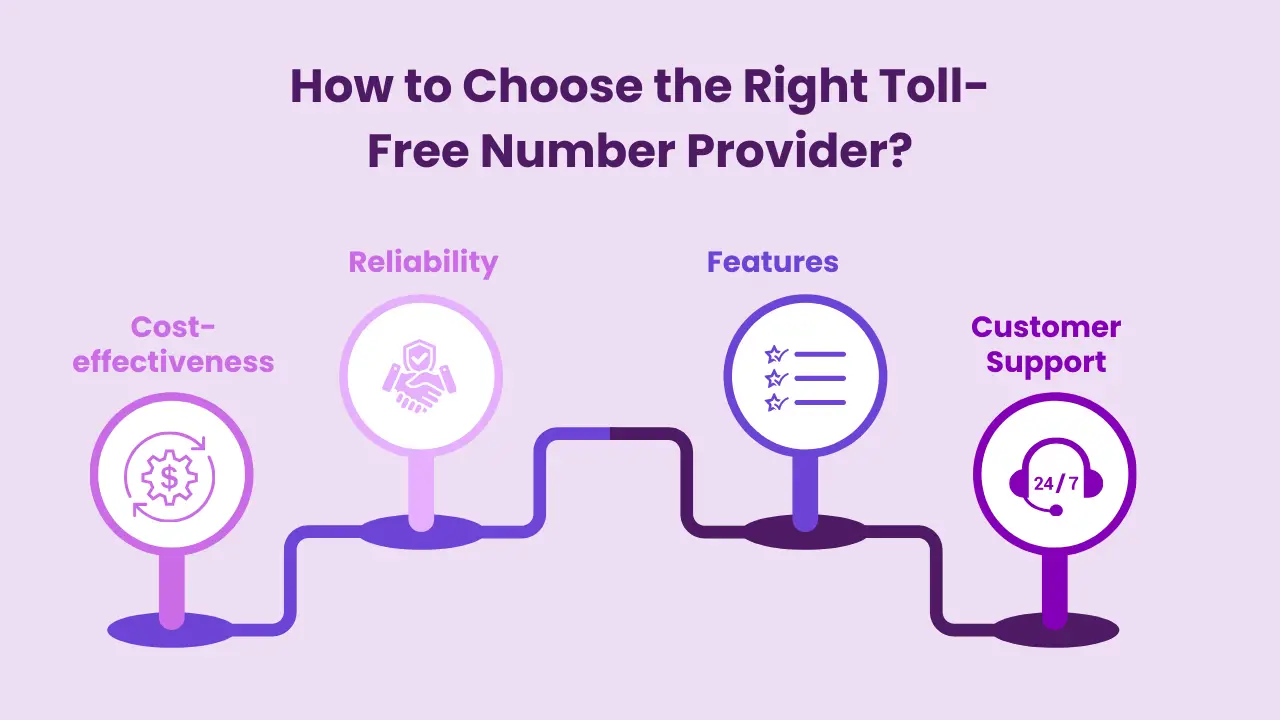
To ensure that your choice aligns with your company’s unique needs, it’s essential to evaluate several key components that can significantly impact service quality and overall customer experience.
- Cost-effectiveness: Look for competitive pricing structures that fit within your budget while providing high-quality service.
- Reliability: Investigate uptime guarantees and the network history of potential providers to ensure consistent connectivity.
- Features: Different providers may offer additional functionalities such as call routing, voicemail, and analytics, which can enhance business operations.
- Customer Support: Assess the availability and responsiveness of support options, including live chat or phone assistance.
- Reputation: Check reviews and testimonials to gauge user satisfaction and overall trustworthiness.
By meticulously considering these elements, businesses can select a number provider that not only meets their communication requirements but also fosters effective customer interactions.
Conclusion
Dedicated no-cost calling options provide significant benefits for businesses, enhancing customer service, improving accessibility, and promoting a positive brand image. With their various types and features, these free-to-call lines can be a valuable asset in any company’s communication strategy. The utilization of these special business lines not only attracts a wider audience but also ensures that customers feel valued and supported. By eliminating charges for the caller, businesses can encourage potential clients to reach out without hesitation. Integrating these no-charge contact points allows for seamless tracking of customer interactions, providing essential insights that can drive improvements in service quality.
- Enhanced customer satisfaction through easy communication
- Boosted credibility and professionalism
- Streamlined customer feedback collection Ultimately, adopting a dedicated line that’s free for callers can transform a company’s outreach efforts, creating a more customer-centric approach that leads to increased loyalty and growth.
FAQ's
A toll-free telephone number, also known as toll-free telephone numbers, allows callers to make free calls to businesses or organizations. The cost of the call is paid by the business, making it a convenient and accessible option for customers.
They are different from regular phone numbers in that they do not incur any charges for the caller. This makes it a more cost-effective and convenient option for customers to reach businesses.
No, these numbers are available in multiple countries around the world. They are commonly used in the United States, Canada, and Australia, but can also be set up in other countries upon request.
A toll-free number can enhance customer experience by providing a free and convenient way for them to reach your business. It also boosts accessibility, as customers can easily remember and dial a toll-free number. Additionally, it can improve your brand image by portraying a professional and customer-friendly image.
Yes, businesses have the option to choose their own toll-free number, as long as it is available. This allows for more customization and branding opportunities for the business.
Setting up a toll-free number is a simple process. You can contact a toll-free service provider, choose a number and plan that fits your business needs, and have it activated within a few days. Some providers also offer additional features like call routing and call recording.
Yes, many providers offer international options for these special business lines. This allows your customers from other countries to reach you without incurring international calling fees. However, it’s important to check with your service provider about specific country availability and any associated costs.
Absolutely. Many businesses use multiple dedicated lines for different purposes or departments. This can help streamline communications by directing callers to the appropriate team more efficiently. For example, you might have separate lines for sales, customer support, and technical assistance.
In most cases, yes. This process is called number porting. When switching providers, you can typically transfer your existing number to the new service. However, it’s crucial to confirm this with both your current and prospective providers before making the switch.
The call capacity depends on your service plan and provider. Basic plans might have limitations on concurrent calls, while more advanced plans can handle higher volumes. If your business expects a high volume of calls, it’s important to discuss this with your provider to ensure you have adequate capacity to handle peak periods without call dropping or long wait times.

